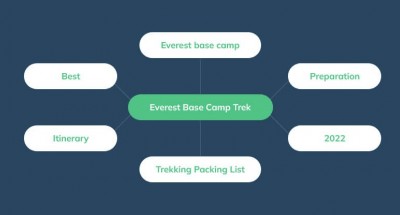Why Affiliate Marketing is Important?
Affiliate marketing is one of the most lucrative marketing strategies to increase brand awareness. With the implementation of this, businesses grow by getting more customers and making more sales. When businesses make more money, the affiliates get paid more.
Both parties have something for them in affiliate marketing: the seller as well as the affiliate. Let us look at some of the ways in which businesses get the best out of affiliate marketing:
Cost-effective Advertising
There are many reasons why affiliate marketing is considered a cost-effective advertising method compared to other advertising techniques like running campaigns. Unlike some other marketing strategies, here businesses are not throwing away money on ads that prove no value. Instead the money is used on the proven values, which are to pay commission to affiliates once they derive a sale.
On top of that, as a business, you are not required to pay advertisers before they add any value to your success, which is sometimes the case with the sales teams in some companies. It has become a norm for some companies to set up a proper functioning affiliate program to save up the hefty advertising cost while keeping themselves from not using or hiring a sales team as well.
Creative Marketing by Affiliates
Affiliates are not dependent on one traffic. Instead they leverage the internet to reap the maximum benefit from it. While there is a huge chance of businesses trying to implement marketing strategies in their own way and failing at it. Affiliates, on the other hand, can come up with many creative ways to market the product.
Affiliates are aware of all the ongoing trends and strategies, like creating a powerful first impression, hosting contests and challenges, and more. Businesses can rely on affiliates for sales and marketing work while managing the cost (without having to spend no money on marketing at all).
High Return on Investment
Affiliate marketing has proven time and again that it is one of the most effective ways to get high ROI compared to other marketing strategies. When the cost of investment in advertising is compared to the cost of returns in affiliate marketing, it always has the edge over traditional marketing strategies.
Rapidly Scale Your Traffic and Sales
Affiliate marketing can turn out to be an extremely influential sales channel for boosting growth. When affiliates are picked wisely, who resonates with your brand, chances are that their audience too will find your product useful.
Affiliates can help to scale your traffic in many ways. Though affiliate marketers won’t directly impact the search engine rankings, they can create a halo effect resulting in deriving customers searching for your product.
Broaden Your Audience
Unlike other sales and marketing techniques which can only act for a certain amount of time or till the budget lasts, affiliate marketing can run 24/7 without any blockage, grabbing every opportunity to broaden the audience. Affiliates can bring customers by leveraging their presence on social media and huge following lists that businesses can never bring on their own.
Boost Your Reputation
The goal of every brand is to grow and become a reputed business amongst its customers. To become a reputed brand, it is important to build trust. This can be done by employing a reputed affiliate with a wider reach.
When a reputed blogger or publisher works for your brand, it not only builds trust among customers but also aids in acquiring new ones. Because customers arrive at your website through a trusted and reputed link, they are more likely to make the purchase.
Performance-based Marketing
Under an affiliate marketing program, businesses need not pay any fixed fee to affiliates like it is with the sales team. The commission is only offered once the sale is closed. This performance-based compensation model drives affiliates to be motivated to increase sales. In short, businesses only pay for what they are getting.
But there are times too, when sellers end up paying for non-converting traffic. This is seen mostly in the Paid Per Click (PPC) compensation model, where sellers pay affiliates for the number of visitors arriving on the website. This includes visitors who do not buy any product.
For an affiliate, getting started on this journey is easy and does not require any money. Anyone can indulge in affiliate marketing, considering it as a side hustle. From the publisher's perspective, this job is not only highly rewarding but has lower risk and minimal business cost to get started, which is one of the reasons why so many individuals are getting into affiliate marketing.
While affiliate marketing as a career offers freedom of choosing a brand and product to promote, it is an extremely scalable business if the right techniques and strategies are implemented, all while learning at one’s own pace with no expertise required in the beginning.
Types of Affiliate Marketing Publishers/affiliates
The ever-expanding industry of affiliate marketing shows no sign of slowing down and is said to grow even more by 2040. According to research by Statista, the U.S. affiliate marketing spend is about to reach 8.2 billion U.S. Dollars by 2022, from 5.4 billion U.S. Dollars recorded in 2017. While it is true that consumers play an extremely important role in the affiliate marketing ecosystem, it is noteworthy that publishers, too, play a crucial role in guiding the audience to the product, and helping the businesses to grow rapidly.
Publishers understand their audience by identifying recent Google trends using certain tools. Each publisher has its way of connecting with the audience, the aim is the same, that is to connect the consumer with the seller or brand while helping them get what they want. Let us now understand the various publishers and the platforms that they use:
- News and Media Sites: Recently, many news & media companies are getting into affiliate programs as a means to generate more revenue. Due to a high number of audiences ranging anywhere from thousands to millions and reputed branding, news media and sites can create a huge impact.
- Influencers: Social media influencers are found on Facebook, Instagram, Pinterest, Youtube, and many more, wherein they promote the product or services on their page, which has a huge list of followers. The main advantage of influencers is that they have a reputation among their highly engaged audience who follows and listens to them. Due to this, the audience will be more likely to buy the product.
- Bloggers: Bloggers are the most common form of publishers who create content in a blog format. To do this they are required to use various SEO techniques to create high-quality content that can help the website to generate organic traffic by driving a high number of users. Here, bloggers use various strategies like displaying affiliate links, sponsored posts, visual ads, and more on their blogs.
- Youtube: While creating articles and blog posts is one way for affiliates to promote the brand, another form of media which is video format is highly engaging and widely accepted by the users. Youtube is extremely popular as it helps affiliates generate interesting content that is capable of drawing users’ intentions, resulting in potential conversion.
- Coupon/cashback/deals: These sites generally have high traffic and offer some form of incentives to the customers if they buy the product from their website. This can be done by announcing exclusive deals, vouchers, and coupon codes on every purchase. Due to this, users are more likely to make purchases as they want some form of free money.
- Email Marketer: Email marketing publishers use their previously built email lists to target relevant audiences. If used wisely, email marketing can turn out to be a great source to expand the reach and generate revenue. This can be achieved by running ads and campaigns while targeting the specific audience according to the business niche.
What are the various affiliate marketing compensation models?
Now that you are aware of how beneficial affiliate marketing can be for both businesses and publishers, it is time to see the various compensation models under which an affiliate will be paid. Though in most cases, the end goal is sales for which publishers get paid.
However, there are few affiliate marketing programs available that reward publishers for generating leads, free-trial users, signing up for newsletters, downloading an app, or even for a click or visiting the website. Each model has its criteria for paying. Therefore, you can focus on each one of them to reap the best.
Pay Per Sale (PPS)
This method favors businesses in a great way since they do not need to worry about paying anything in case of no sales generation. As a business, it helps to save their investment, which otherwise they would have done on the sales team.
This compensation method is widely used in affiliate marketing. As the name suggests, an affiliate makes money every time a sale is generated by them. They get paid some percentage of the sale price every time a customer buys some product or service using their affiliate link.
Pay Per Action (PPA)/Cost Per Action (CPA)
For businesses, the pay per action method turns out as a great way to understand their audience while helping them to recognize which non-sale action can be more beneficial. This non-sale compensation method focuses on generating leads.
Affiliates are asked by the seller to refer customers to their website to carry out various actions such as creating an account, signing up for newsletters, downloading e-books, and more. Since there is no sales generation involved here, affiliates are not paid on some percentage of the sale price but rather on some prearranged sum which differs for each affiliate program.
Pay Per Mille (PPM)/Cost Per Impression (CPI)
Under this compensation method, an affiliate gets paid for impressions, that is the number of views on the page. Mille in Latin means thousand, meaning PPM is nothing but the cost of a thousand impressions.
A web impression is counted every time a customer visits the seller’s website and views any ad that is being displayed on the page. Here, the customer need not perform any action. The pay of this compensation model is comparatively lower than the other models.
Pay Per Click (PPC)/Cost Per Click (CPC)
This compensation method is quite an unusual one and is not preferred by many sellers due to the kind of risk it possesses. Here, the affiliate earns money every time the consumer clicks on the link, regardless of whether they buy the product or engage with the business or convert to a lead.
The reason why it is considered risky is that there is no obligation on the affiliate to generate sales or leads, resulting in businesses losing money on empty referrals.
Affiliate Marketing Trends
More Influencer Marketing
Influencers have become a key to unlocking the success of brand reach. From large influencers having millions of followers to micro and nano influencers, brands are turning to everyone to build a reputation to gain new customers. Though the size of followers has nothing to do with bringing trustworthy customers, it is more to do with how influential and engaging content an influencer brings out.
According to Influencer Marketing Hub, in the year 2021, the total worth of Influencer marketing was $13.8 billion. While large influencers can leverage their following to create a huge impact to gain organic traffic. Micro-influencer, on the other hand, are more trusted and reliable in the buyer’s eyes for being niche-focused.
Fewer Cookies Please
A cookieless future is here. But why? The main reason is consumer privacy and safety that consumers are demanding due to past data breaches over the years. Google is all set out to remove third-parties cookies by 2023. This will be achieved by removing the need for tracking cookies from third-party publishers. Now the main focus will be on the data collected from first-party publishers.
Data tracked from first-party publishers can help identify the user’s actions on the site, the frequency of their visits, and more. Cookieless sites not only secure the consumer data but also provide a seamless customer experience by removing the annoying pop-ups asking for cookie updates which are no less than a hurdle.
Improved User Experience
With the improvements made in UX over the past few years, it has now become worth and more important than ever to focus on a seamless user experience. The user journey becomes exceptional if they come across a fast and slick website that takes them to the product they are looking for in just one click. In such cases, the conversion rates are higher, and there are fewer chances of losing the customer.
Adaptability and simplicity is the key to a better user experience. The website is adaptable if it can switch efficiently from mobile to desktop and vice versa. Simplicity is measured if the content is explained in fewer words while making the journey from information to sale quick and easy.
More Video Content
All forms of video content are rising exponentially in the past few years. Be it a TikTok video, Instagram reels, or Youtube shorts, it fascinates everyone from Gen Z to Millenials to their parents and grandparents. These videos are available in all forms, from educational to entertaining. Since they are very likely to get viral, and more often than not they do, resulting in gaining millions of views.
Regardless of the number of followers, video content can reach a surprising number of people in no time. Users like to watch something more than they want to read or listen to something, since it does not require a lot of focus or time. That is why promoting through video content increases the chance of getting the user's attention.
More Voice Search
With the spread of smart devices like Siri, Alexa, Cortana, Echo, and Google assistants in homes, customers have now started searching online using their voice. It is surprising to see the high number of smart device users all over the world, with Google assistant having 500 million monthly users. Though not all the content has been voice search optimized as of now, few markets have already taken steps in that direction, and more are about to.
To refine the content for voice search, businesses need to add more questions, such as FAQs and guidelines on their landing page to be prepared to answer search queries. Since voice searches are more keyword specific, it is important to optimize the content with precise keywords.
Yes to Live Shopping
Virtual shopping has already gained attention all over the world. Many platforms like Instagram, Facebook, and Pinterest have already started live streams by teaming up with popular creators. When influential creators live to endorse or launch any product while offering discounts and detailed features of the products, the audience can interact with them and give real-time feedback. This helps in making the shopping experience more fascinating.
There is also virtual shopping that is gaining popularity. Though there is time for that becoming a norm, it is slowly and steadily coming into the picture. There are a few big brands like IKEA and Burger King that have already used augmented reality in their advertising.
More Performance-based Models
Gone are the days when influencers and affiliates were paid on a pay-per-post model. Brands now have switched from traditional marketing and advertising media to a performance-based affiliate compensation model where they only pay for tangible results.
There is no going back once the businesses have had the experience of paying for performance and guaranteed ROI. They know what effective marketing is about.
Conclusion
Affiliate marketing can be implemented as an additional marketing strategy or as the only marketing strategy by some businesses, depending on the end goal. There are huge benefits of this marketing strategy for businesses, and that is why more and more brands are considering having their affiliate program.
These programs are not only easy to initiate and manage, but they can also help gain useful affiliates who have the potential to increase sales, create quality content for the brand’s marketing campaign, enhance brand awareness, and build the brand’s reputation.



